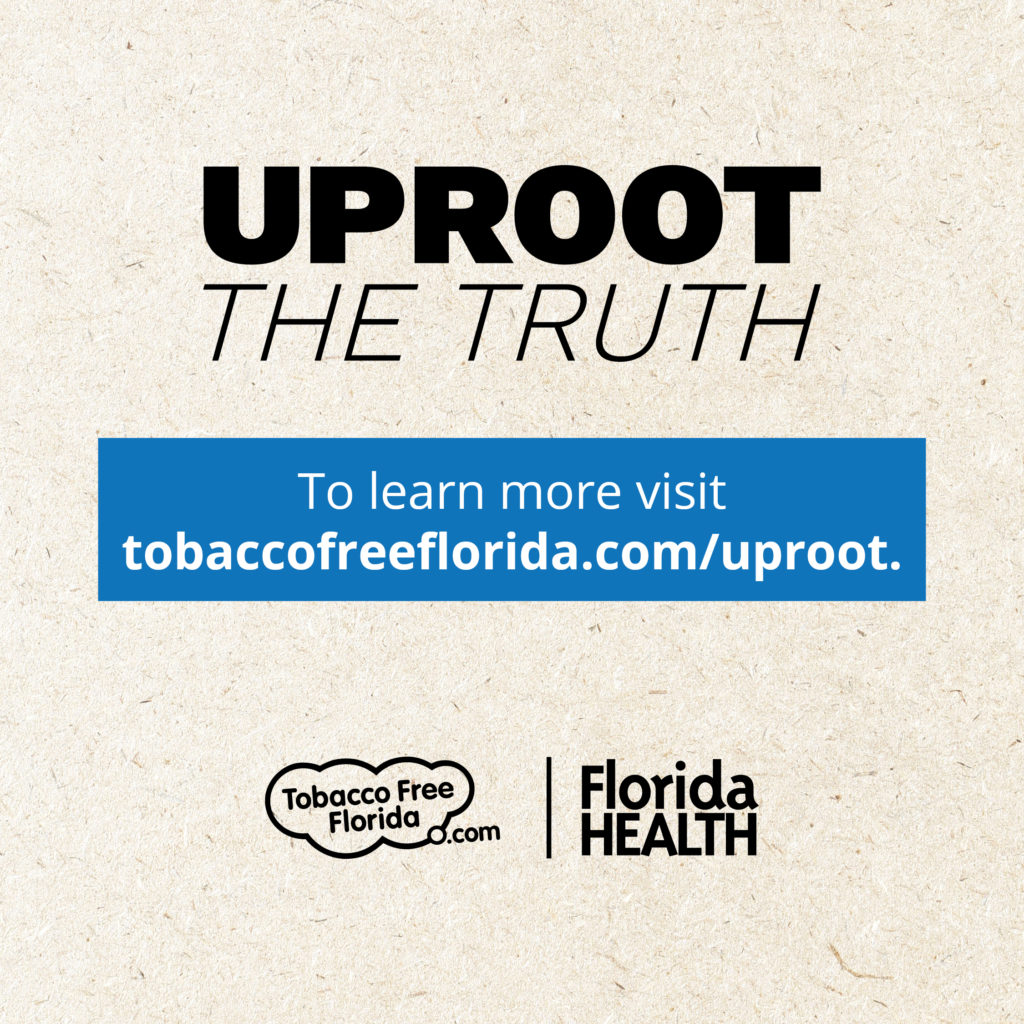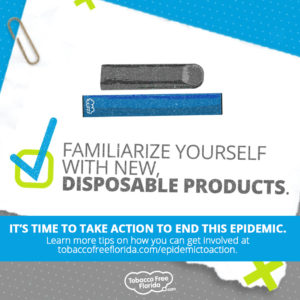Smokeless Tobacco
Smokeless tobacco contains nicotine and is addictive 1, but it’s not burned. It’s typically called spit tobacco, chewing tobacco, chew, or dip.
Types of smokeless tobacco include:
- Chewing tobacco is the most common type of smokeless tobacco. It contains loose leaf tobacco, plug or twist. It is usually packaged in foil pouches. 2
- Snuff is finely ground tobacco that can be dry, moist, or packaged in pouches or packets. Moist snuff, the most common, is often called dip. 3
- Dissolvables is finely ground tobacco pressed into shapes such as tablets, sticks, or strips. 4 It comes in the form of lozenges, orbs, sticks, and strips. 5

Snus

Dip / Moist Snuff

Loose Chewing Tobacco

Plug Chewing Tobacco
Health Effects
Smokeless tobacco is not safe and contains nicotine, which is highly addictive. 6 Many smokeless tobacco products contain cancer-causing chemicals. 7, 8 The most harmful chemicals are tobacco-specific nitrosamines, which form during the growing, curing, fermenting, and aging of tobacco. The amount of these chemicals varies by product. 9
Other chemicals found in smokeless tobacco can also cause cancer, including: 10
- A radioactive element (polonium-210) found in tobacco fertilizer
- Chemicals formed when tobacco is cured with heat (polynuclear aromatic hydrocarbons—also known as polycyclic aromatic hydrocarbons)
- Harmful metals (arsenic, beryllium, cadmium, chromium, cobalt, lead, nickel, mercury)
Smokeless tobacco:
- can cause cancer of the mouth, esophagus, and pancreas. 11
- can cause gum disease, tooth decay, and tooth loss. 12, 13
- may increase the risk of death from heart disease and stroke. 14, 15
Learn about the larger effect of tobacco and the benefits of quitting.
The Issue
Many smokeless tobacco products come in flavors and packaging that appeal to young people. 16 Candy and fruit flavors mask the bad taste of tobacco, making it easier for youth and teens to start using tobacco. With a new range of products and flavors on the market, there are more opportunities for young people to experiment with tobacco. Adolescent smokeless tobacco users are more likely than nonusers to become adult cigarette smokers. 17
Major U.S. cigarette companies, including R.J. Reynolds and Altria, have acquired smokeless tobacco brands. The marketing of smokeless tobacco products has also significantly increased. In 2017, tobacco companies spent more than $718 million on advertising and promotion of smokeless tobacco products – that’s more than double of what was spent 10 years earlier in 2007. 18, 19 Much of this spending was used to pay for price cuts through coupons, sales, and giveaways. 20
Even without price cuts, many smokeless products cost less than conventional cigarettes, appealing both to young people and low-income communities.
Quit Smokeless Tobacco
Tobacco Free Florida offers FREE nicotine replacement patches, gum, or lozenges to help you quit and type of tobacco.
*if medically appropriate and 18 years of age or older
1 World Health Organization. IARC Monographs on the Evaluation of Carcinogenic Risks to Humans. Volume 89: Smokeless Tobacco and Some Tobacco-Specific N-Nitrosamines. Lyon (France): World Health Organization, International Agency for Research on Cancer, 20072 World Health Organization. IARC Monographs on the Evaluation of Carcinogenic Risks to Humans. Volume 89: Smokeless Tobacco and Some Tobacco-Specific N-Nitrosamines. Lyon (France): World Health Organization, International Agency for Research on Cancer, 2007
3 Mejia AB, Ling PM. Tobacco Industry Consumer Research on Smokeless Tobacco Users and Product Development. American Journal of Public Health 2010;100(1):78–87
4 U.S. Department of Health and Human Services. Preventing Tobacco Use Among Youth and Young Adults: A Report of the Surgeon General. Atlanta: U.S. Department of Health and Human Services, Centers for Disease Control and Prevention, National Center for Chronic Disease Prevention and Health Promotion, Office on Smoking and Health, 2012
5 U.S. Department of Health and Human Services. Preventing Tobacco Use Among Youth and Young Adults: A Report of the Surgeon General. Atlanta: U.S. Department of Health and Human Services, Centers for Disease Control and Prevention, National Center for Chronic Disease Prevention and Health Promotion, Office on Smoking and Health, 2012
6 Cancer Prevention & Early Detection Facts and Figures 2010.
7 World Health Organization. IARC Monographs on the Evaluation of Carcinogenic Risks to Humans. Volume 89: Smokeless Tobacco and Some Tobacco-Specific N-Nitrosamines. Lyon (France): World Health Organization, International Agency for Research on Cancer, 2007
8 Stanfill SB, Connolly GN, Zhang L, Jia LT, Henningfield JE, Richter P, et al. Global Surveillance of Oral Tobacco Products: Total Nicotine, Unionised Nicotine and Tobacco-Specific N-Nitrosamines. Tobacco Control 2011 May;20(3):e2. doi:10.1136/tc.2010.037465
9 World Health Organization. IARC Monographs on the Evaluation of Carcinogenic Risks to Humans. Volume 89: Smokeless Tobacco and Some Tobacco-Specific N-Nitrosamines.[PDF–3.18 MB] Lyon (France): World Health Organization, International Agency for Research on Cancer, 2007
10 Stanfill SB, Connolly GN, Zhang L, Jia LT, Henningfield JE, Richter P, et al. Global Surveillance of Oral Tobacco Products: Total Nicotine, Unionised Nicotine and Tobacco-Specific N-Nitrosamines. Tobacco Control 2011 May;20(3):e2. doi:10.1136/tc.2010.037465
11 World Health Organization. IARC Monographs on the Evaluation of Carcinogenic Risks to Humans. Volume 89: Smokeless Tobacco and Some Tobacco-Specific N-Nitrosamines. Lyon (France): World Health Organization, International Agency for Research on Cancer, 2007
12 World Health Organization. IARC Monographs on the Evaluation of Carcinogenic Risks to Humans. Volume 89: Smokeless Tobacco and Some Tobacco-Specific N-Nitrosamines. Lyon (France): World Health Organization, International Agency for Research on Cancer, 2007
13 Piano MR, Benowitz NL, Fitzgerald GA, Corbridge S, Heath J, Hahn E, et al. Impact of Smokeless Tobacco Products on Cardiovascular Disease: Implications for Policy, Prevention, and Treatment: A Policy Statement from the American Heart Association. Circulation 2010;122(15):1520–44
14 World Health Organization. IARC Monographs on the Evaluation of Carcinogenic Risks to Humans. Volume 89: Smokeless Tobacco and Some Tobacco-Specific N-Nitrosamines. Lyon (France): World Health Organization, International Agency for Research on Cancer, 2007
15 Piano MR, Benowitz NL, Fitzgerald GA, Corbridge S, Heath J, Hahn E, et al. Impact of Smokeless Tobacco Products on Cardiovascular Disease: Implications for Policy, Prevention, and Treatment: A Policy Statement from the American Heart Association. Circulation 2010;122(15):1520–44
16 U.S. Department of Health and Human Services. Preventing Tobacco Use Among Youth and Young Adults: A Report of the Surgeon General. Atlanta, GA: U.S. Department of Health and Human Services, Centers for Disease Control and Prevention, National Center for Chronic Disease Prevention and Health Promotion, Office on Smoking and Health, 2012.
17 U.S. Department of Health and Human Services. Preventing Tobacco Use Among Youth and Young Adults: A Report of the Surgeon General. Atlanta: U.S. Department of Health and Human Services, Centers for Disease Control and Prevention, National Center for Chronic Disease Prevention and Health Promotion, Office on Smoking and Health, 2012.
18 “Federal Trade Commission Smokeless Tobacco Report for 2017.” Federal Trade Commission Smokeless Tobacco Report for 2017 (2016): 2. Federal Trade Commission. 2016. Web. 15. www.ftc.gov/system/files/documents/reports/federal-trade-commission-cigarette-report-2017-federal-trade-commission-smokeless-tobacco-report/ftc_smokeless_tobacco_report_2017.pdf
19 U.S. Department of Health and Human Services. Preventing Tobacco Use Among Youth and Young Adults: A Report of the Surgeon General. Atlanta: U.S. Department of Health and Human Services, Centers for Disease Control and Prevention, National Center for Chronic Disease Prevention and Health Promotion, Office on Smoking and Health, 2012.
20 U.S. Department of Health and Human Services. Preventing Tobacco Use Among Youth and Young Adults: A Report of the Surgeon General. Atlanta: U.S. Department of Health and Human Services, Centers for Disease Control and Prevention, National Center for Chronic Disease Prevention and Health Promotion, Office on Smoking and Health, 2012.




















